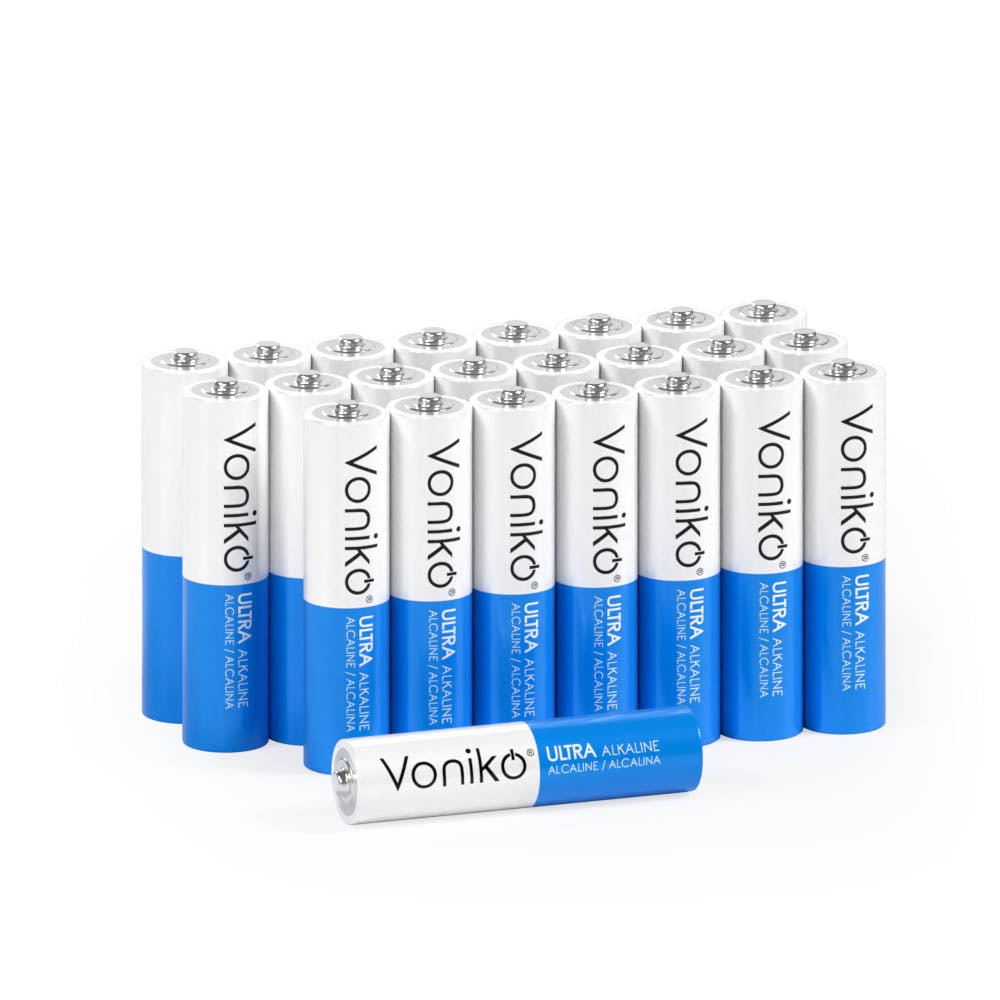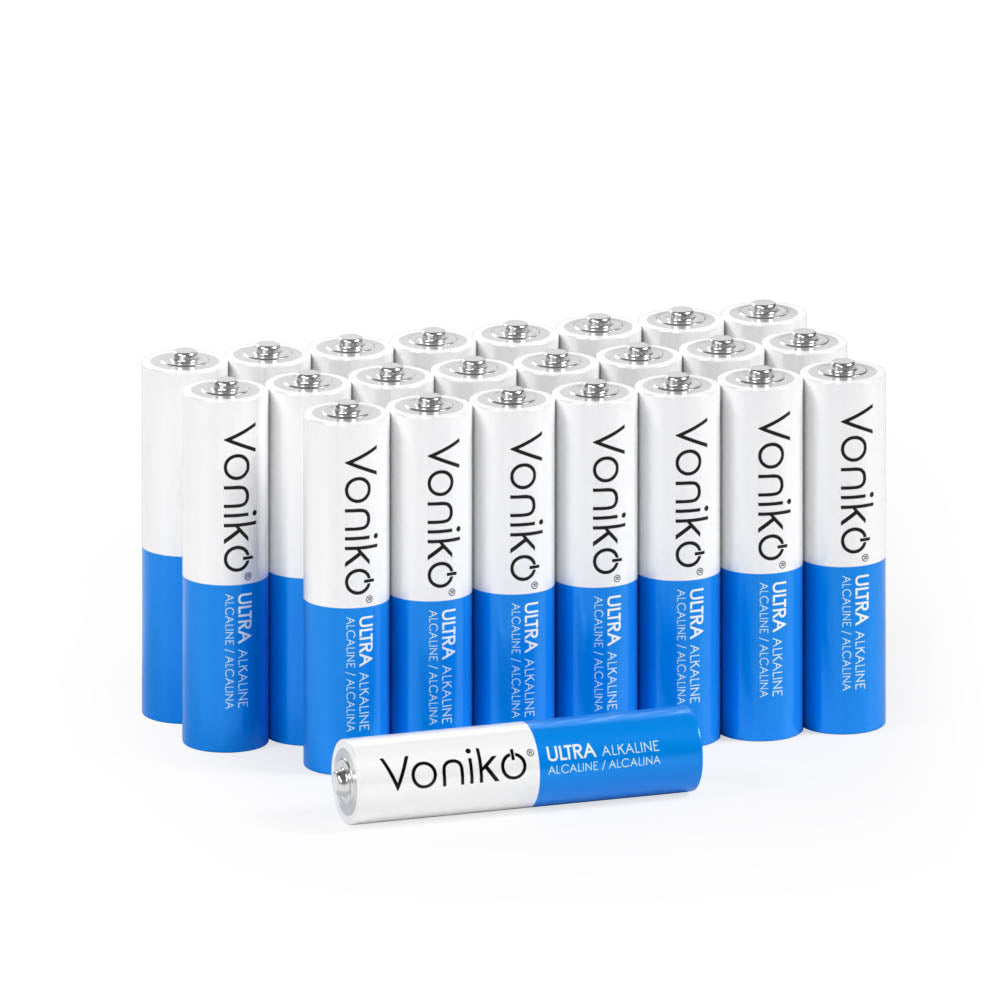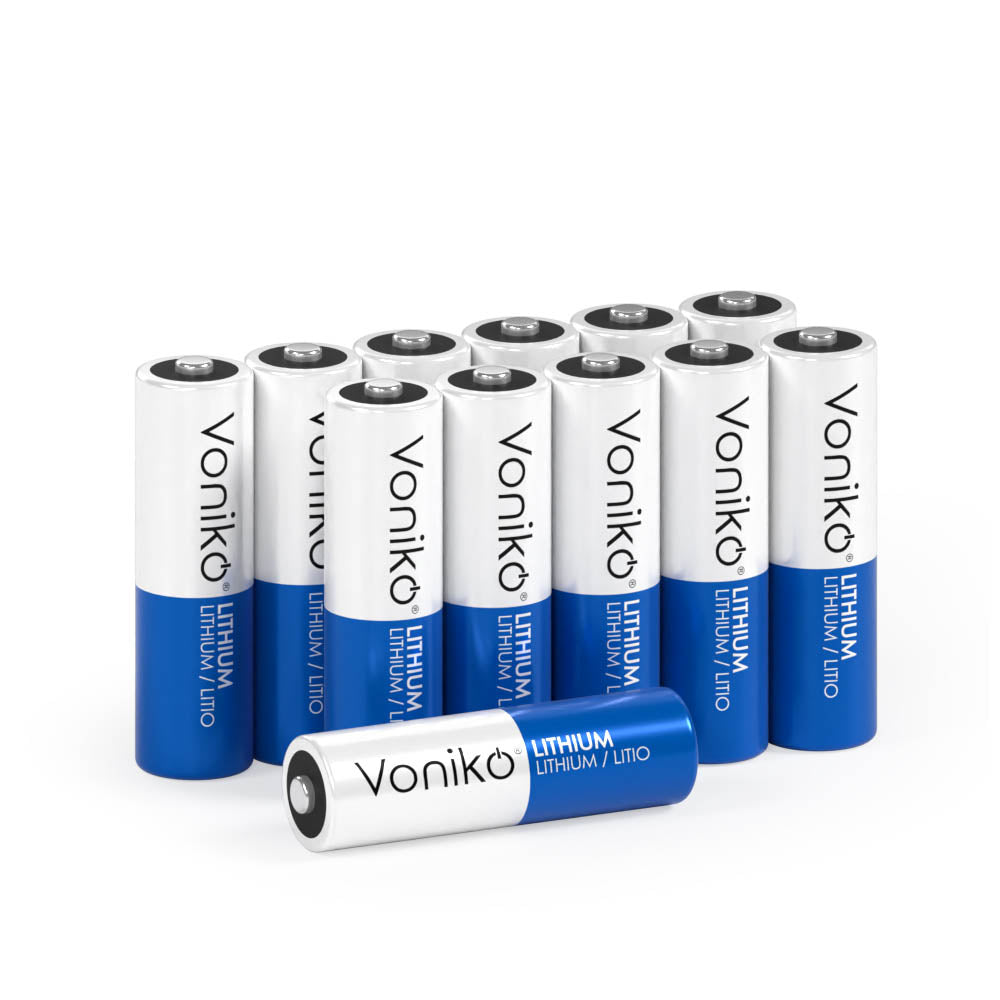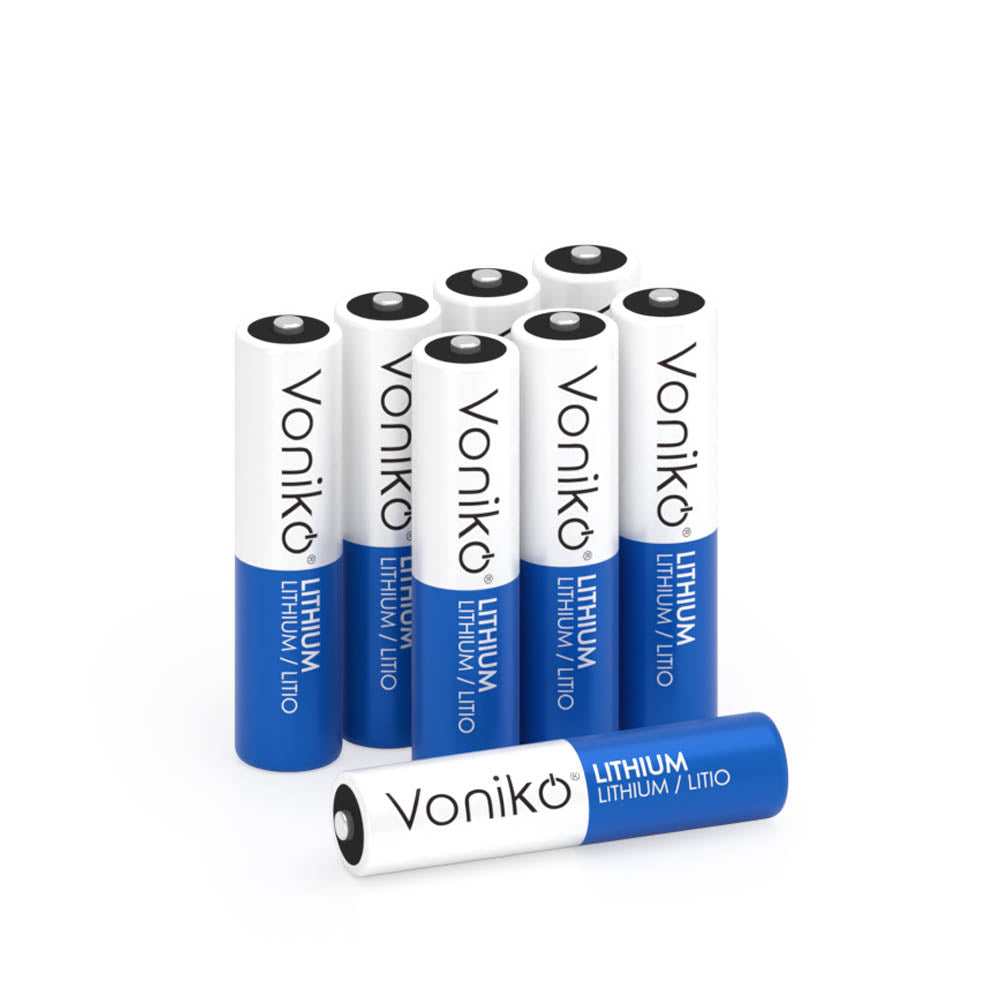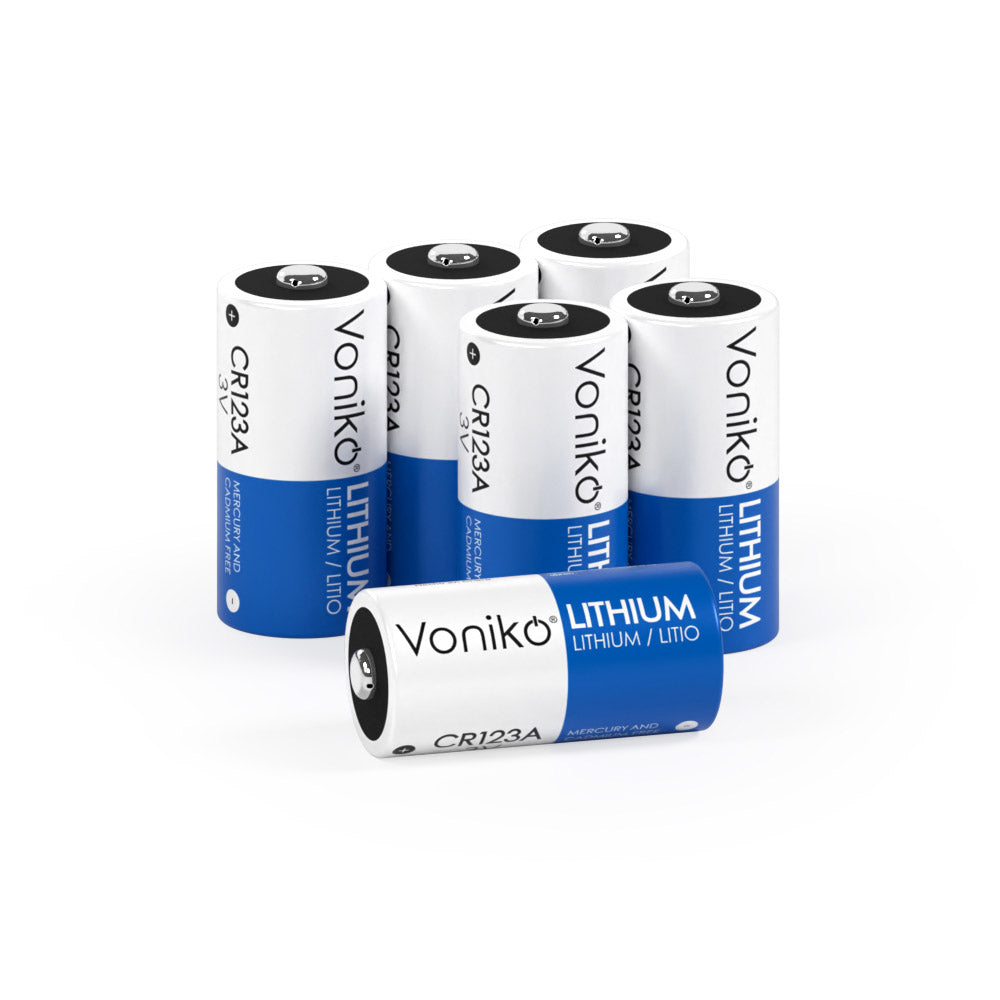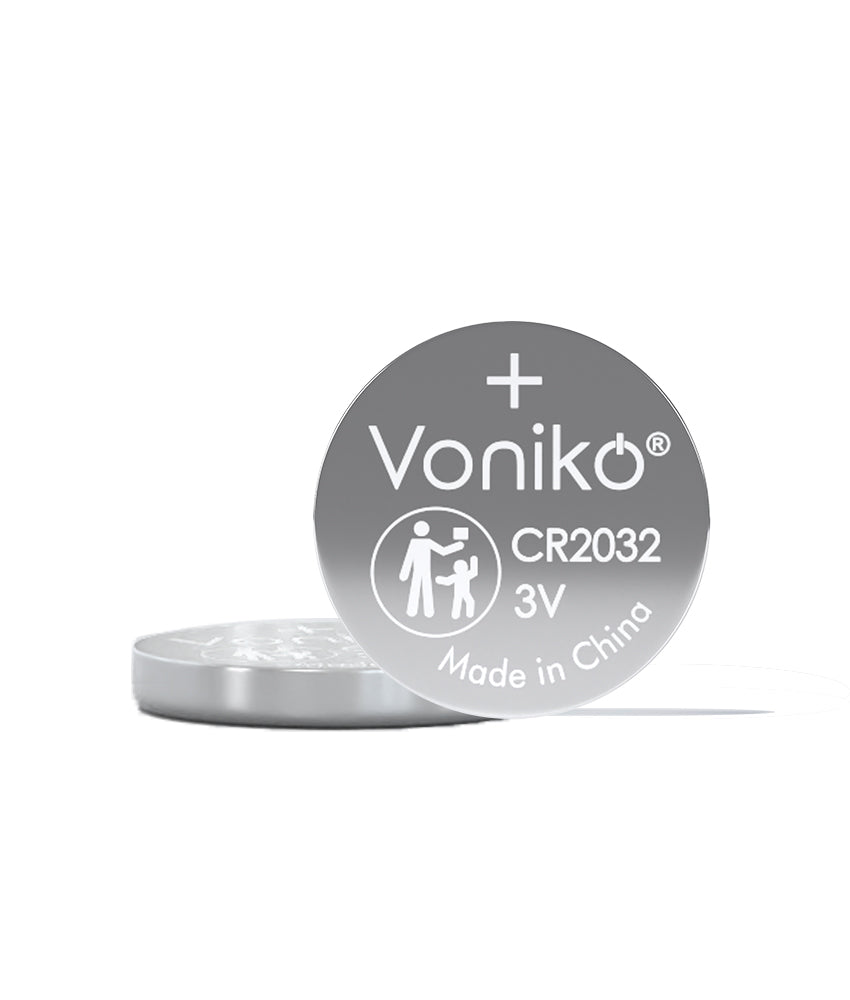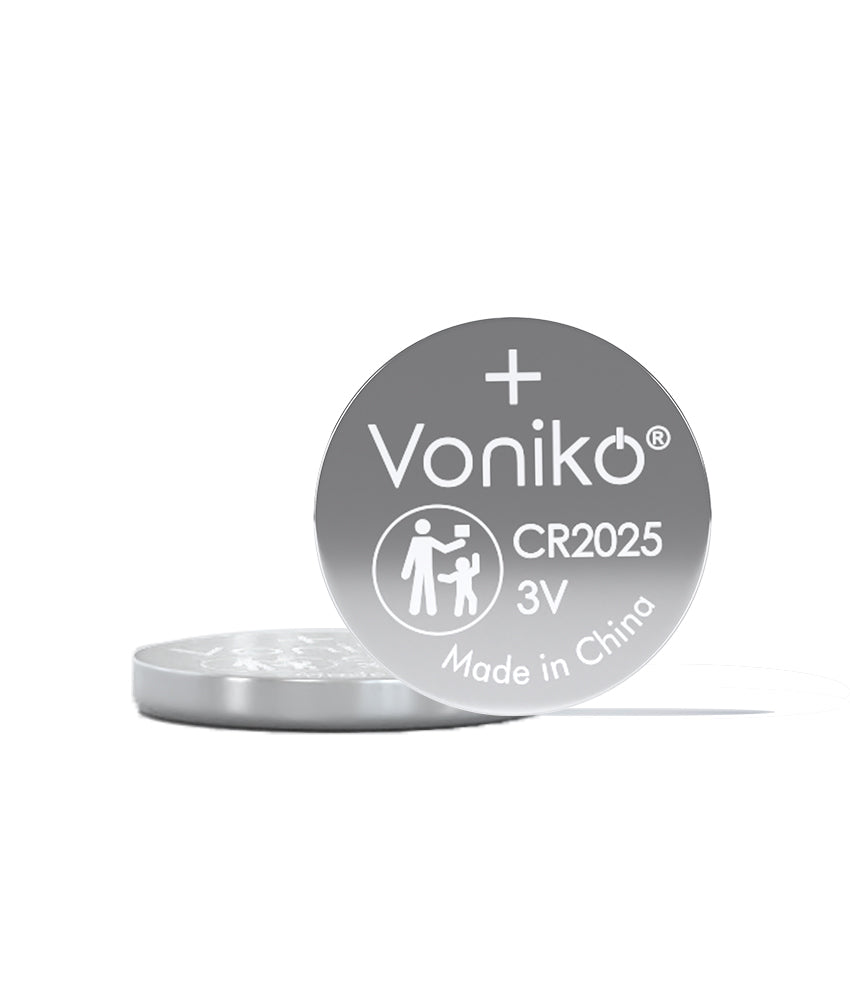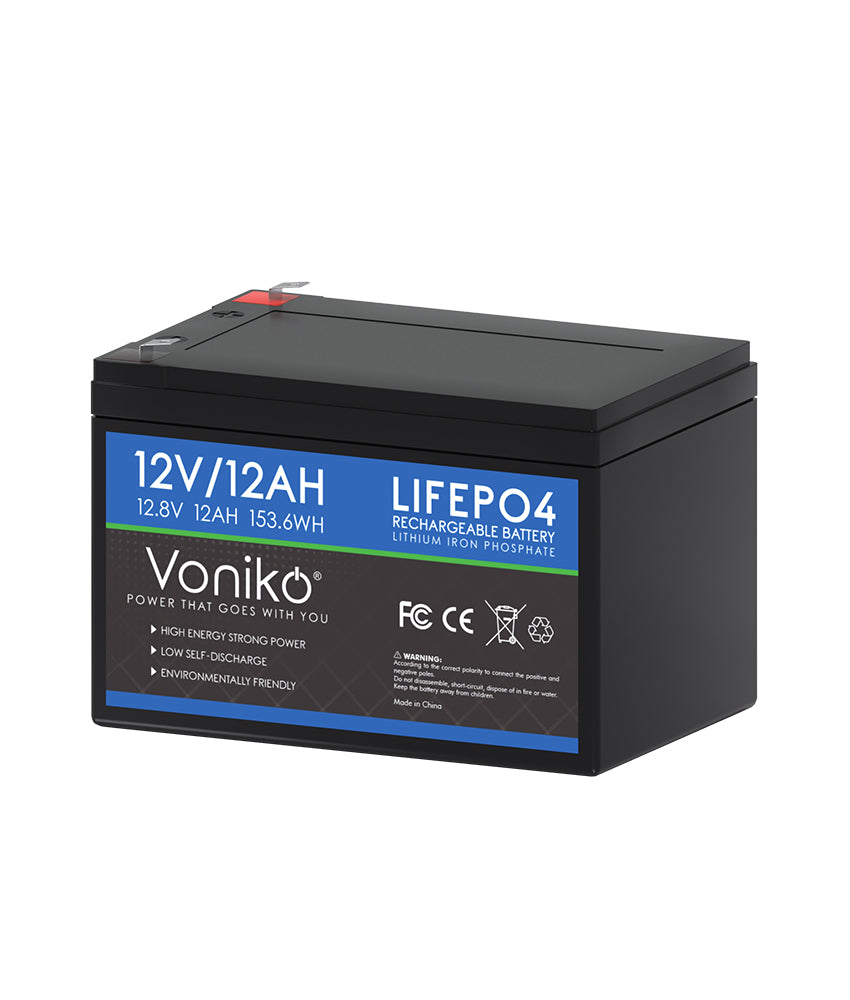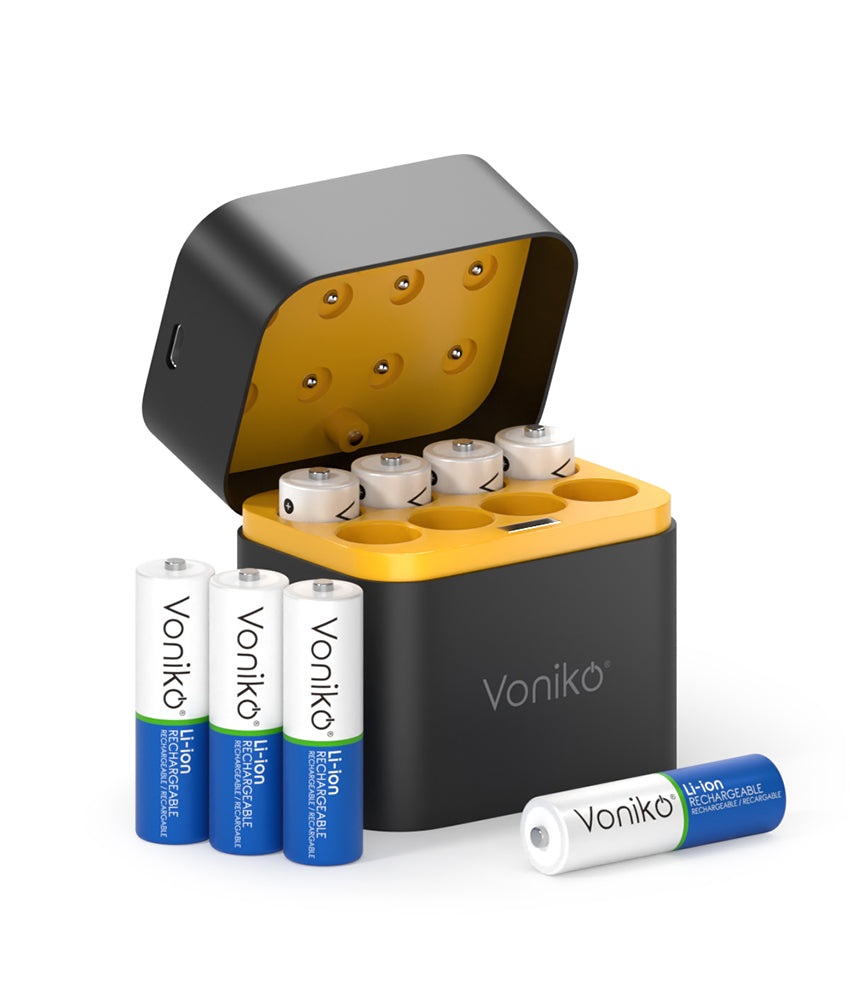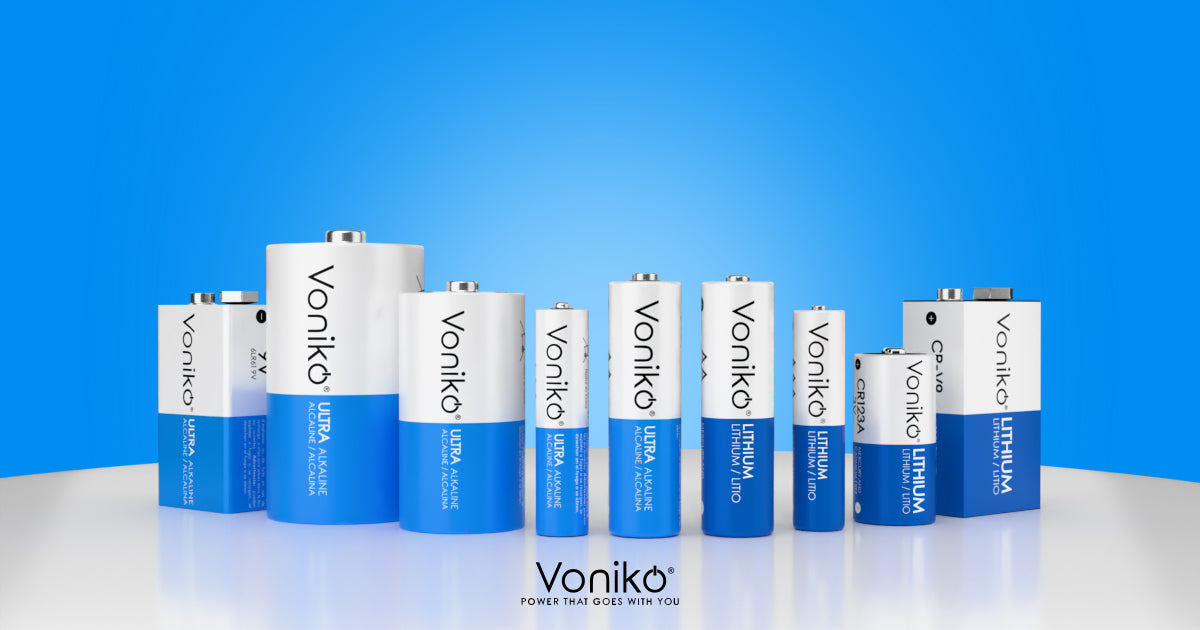You're at the airport, watching your suitcase disappear down the conveyor belt, when suddenly you remember – there's a lithium battery pack in there. Your heart skips a beat. Will they confiscate your luggage? Could your bag get pulled aside? What exactly happens when lithium batteries go through the baggage screening process?
The rules around flying with lithium batteries have gotten stricter over the years, and for good reason. These powerful energy sources can pose safety risks in aircraft cargo holds, but the regulations are more nuanced than most people realize. The outcome depends on what type of lithium battery you're carrying, how it's packaged, and which airline you're flying.
At Voniko®, we're a U.S.-based battery brand known for great value household batteries, and we get questions about travel regulations constantly. Whether you're traveling with our lithium AA batteries for your camera or wondering about that power bank you forgot to pack in your carry-on, understanding the real rules can save you from delays, confiscated items, or worse – safety incidents that put everyone at risk.
The Quick Answer: It Depends on the Type
Not all lithium batteries are treated the same way by airport security and airlines. The rules vary dramatically based on whether you're dealing with primary lithium batteries (like our AA lithium batteries), lithium-ion rechargeable batteries, or high-capacity power banks.
Generally allowed in checked luggage:
- Primary lithium batteries: AA, AAA, CR2032 coin cells up to 2 grams lithium content
- Small lithium-ion batteries: Under 100 watt-hours, properly installed in devices
- Low-power devices: Cameras, watches, small electronics with built-in batteries
Restricted or prohibited in checked luggage:
- Loose lithium-ion batteries: Any rechargeable lithium batteries not installed in devices
- High-capacity power banks: Over 100 watt-hours
- Damaged batteries: Any battery with visible damage, swelling, or leaks
- Large quantities: Excessive amounts of any battery type
What actually happens:
If security finds prohibited lithium batteries in your checked luggage, they'll typically remove your bag from the plane and contact you. Depending on the airport and situation, you might need to return to baggage claim, repack your items, or forfeit the batteries entirely. In extreme cases, your entire bag could be confiscated for security review.
The key thing to understand is that these rules exist because lithium batteries can overheat, catch fire, or even explode under certain conditions. In the pressurized cargo hold of an aircraft, these risks are amplified, and there's no easy way for crew to access the cargo area to deal with emergencies.
What are the Different Types of Lithium Batteries
The confusion around lithium battery travel rules often comes from mixing up different battery types. Each category has its own safety profile and corresponding regulations.
Primary (non-rechargeable) lithium batteries:
These include our Voniko lithium AA batteries and CR2032 coin cells. They're generally considered safer for air travel because they're less prone to thermal runaway – the dangerous condition where batteries overheat uncontrollably.
- Examples: AA, AAA, 9V, CR2032, CR123A lithium batteries
- Travel status: Usually allowed in checked luggage in reasonable quantities
- Lithium content limit: Must contain less than 2 grams of lithium metal per battery
- Packaging requirements: Should be in original packaging or terminals protected
Lithium-ion rechargeable batteries:
These are the batteries in your phone, laptop, and power banks. They're more energy-dense and have a higher risk of thermal runaway, especially if damaged.
- Examples: Phone batteries, laptop batteries, power banks, camera batteries
- Travel status: Severely restricted in checked luggage
- Capacity limits: Under 100Wh usually allowed, 100-160Wh need airline approval
- Installation requirement: Must be installed in devices for checked luggage
High-capacity lithium systems:
Large battery packs, electric bike batteries, and industrial equipment fall into this category and are generally prohibited from passenger aircraft entirely.
- Examples: E-bike batteries, large tool batteries, electric vehicle batteries
- Travel status: Usually prohibited on passenger aircraft
- Special handling: May require freight shipping or special arrangements
What Airport Security Actually Does
When your checked bag goes through the screening process, it passes through sophisticated X-ray machines that can identify battery shapes and densities. Security personnel are trained to recognize potential lithium battery violations, but the process isn't foolproof.
The screening process:
- Initial X-ray scan: Bags pass through machines that highlight suspicious items
- Manual inspection: Flagged bags get opened and physically inspected
- Battery identification: Security looks for prohibited battery types and quantities
- Risk assessment: Decisions made based on battery type, condition, and packaging
What triggers additional screening:
- Large concentrations of batteries: Multiple batteries clustered together
- Unusual shapes: Power banks and large lithium-ion batteries have distinctive X-ray signatures
- Poor packaging: Loose batteries rolling around in luggage
- Damaged items: Anything that looks swollen, damaged, or leaking
If prohibited items are found:
The process varies by airport and country, but typically involves removing your bag from the aircraft, attempting to contact you, and giving you options to repack, forfeit items, or retrieve your bag. This can cause significant flight delays if you're unreachable or if the bag is discovered after you've already boarded.
Response time varies:
Sometimes violations are caught immediately during screening. Other times, they're discovered during random additional checks or when baggage handlers notice something unusual. The later in the process this happens, the more disruptive it becomes.
Why are there Battery Safety Concerns?
Lithium batteries, while generally safe, can become dangerous under certain conditions that are more likely to occur during air travel.
Thermal runaway explained:
This is the primary safety concern with lithium batteries. When a battery overheats, it can trigger a chemical reaction that generates more heat, creating a self-sustaining cycle that can lead to fire or explosion. In a pressurized aircraft cargo hold, these risks are amplified.
Contributing factors during air travel:
- Pressure changes: Can stress battery cases and internal components
- Temperature variations: Cargo holds experience significant temperature swings
- Physical stress: Baggage handling can damage batteries
- Confined space: Limited ability to manage fires in cargo areas
- Time factors: Long flights mean extended exposure to risk conditions
Why cargo holds are particularly risky:
Unlike the passenger cabin, cargo holds are not easily accessible during flight. If a battery fire starts in checked luggage, crew have limited options to respond quickly and effectively. The confined space and presence of other flammable materials can make small battery fires much more dangerous.
Historical incidents:
There have been documented cases of lithium battery fires in aircraft cargo holds, leading to emergency landings and, in extreme cases, aircraft loss. These incidents drove the development of current regulations and explain why enforcement can be strict.
Airline-Specific Policies and Variations
While international aviation authorities set baseline standards, individual airlines often have their own additional restrictions that can be more stringent than government regulations.
Major U.S. airline policies:
Most major carriers follow similar guidelines but may have different enforcement approaches or additional restrictions for certain battery types or quantities.
International carrier variations:
Airlines based in different countries may have additional restrictions based on their home country's regulations. Some are more restrictive than U.S. carriers, particularly regarding quantities and battery types.
Cargo vs. passenger policies:
The same airline may have completely different rules for cargo shipments versus passenger luggage. What's prohibited in passenger luggage might be acceptable for cargo shipment with proper documentation and packaging.
Seasonal or route-specific restrictions:
Some airlines implement additional restrictions on certain routes or during specific seasons based on risk assessments or regulatory requirements in destination countries.
Business and first-class considerations:
Higher-tier passengers sometimes receive different treatment when violations are discovered, though the safety rules themselves don't change based on ticket class.
How to Properly Pack Lithium Batteries for Travel
The best way to avoid problems is to pack lithium batteries correctly from the start. This means understanding what goes where and how to package everything safely.
For primary lithium batteries (like our Voniko AA lithium batteries):
- Keep in original packaging when possible
- Protect terminals with tape or individual cases if not in original packaging
- Reasonable quantities only – don't pack dozens of batteries unless necessary
- Distribute between bags rather than concentrating in one location
- Check destination country rules as some have stricter import restrictions
For lithium-ion rechargeable batteries:
- Install in devices for checked luggage
- Carry loose batteries in carry-on luggage only
- Use protective cases for spare camera batteries
- Turn devices completely off (not just sleep mode)
- Check battery capacity and ensure it's under limits
For power banks and large batteries:
- Carry-on only for anything over small AA/AAA size
- Check watt-hour ratings and ensure compliance
- Bring documentation showing capacity if asked
- Keep easily accessible in carry-on for security inspection
General packing tips:
- Spread batteries out rather than packing them all together
- Use original packaging whenever possible
- Protect from short circuits by covering terminals
- Don't pack damaged batteries regardless of type
- Research destination rules before traveling internationally
Different Country Regulations About Lithium battery
Lithium battery regulations vary significantly between countries, and what's acceptable in the U.S. might be prohibited elsewhere. This is particularly important for international travelers.
European Union:
Generally follows similar guidelines to the U.S. but some member countries have additional restrictions. Enforcement can be stricter at certain airports.
Asia-Pacific region:
Countries like Japan, Australia, and Singapore often have very strict enforcement of lithium battery rules. Some have additional restrictions on quantities or require special documentation.
Middle East:
Many Middle Eastern countries have particularly strict rules about lithium batteries, partly due to security concerns. Some airports conduct very thorough inspections.
Developing countries:
May have inconsistent enforcement or different interpretations of international rules. Some have stricter rules due to limited emergency response capabilities.
Transit considerations:
Even if your final destination allows certain batteries, transit countries may have different rules. A battery legal in both your departure and arrival countries might be prohibited in a transit country.
What to Do If Your Batteries Are Confiscated
If airport security discovers prohibited lithium batteries in your luggage, how you respond can affect the outcome and your travel plans.
Immediate steps:
- Stay calm and cooperative with security personnel
- Provide information about the batteries if asked
- Don't argue about regulations – focus on finding solutions
- Ask about options for repacking or retrieving items
Potential solutions:
- Repack items in carry-on luggage if you're still in the secure area
- Ship items separately to your destination
- Leave items with someone who can mail them later
- Accept confiscation if no other options exist
Documentation:
- Get receipts for any confiscated items
- Take photos of expensive confiscated equipment
- Keep all paperwork related to the incident
- Note names and badge numbers of involved personnel
Insurance considerations:
Most travel insurance doesn't cover items confiscated for regulatory violations, but some credit cards or homeowner's insurance might provide coverage.
Preparing for Hassle-Free Battery Travel
The best strategy is prevention – properly planning your battery needs and packing before you ever get to the airport.
Pre-travel planning:
- Research destination rules weeks before traveling
- Contact airlines directly if you have questions about specific batteries
- Consider shipping alternatives for large or questionable batteries
- Plan device usage to minimize battery needs during travel
Packing strategies:
- Use original packaging whenever possible for our Voniko lithium batteries and others
- Create a battery inventory of what you're packing where
- Take photos of valuable batteries before packing
- Pack documentation showing battery specifications if needed
At the airport:
- Arrive early to handle any battery-related delays
- Keep batteries easily accessible for inspection
- Be prepared to explain what devices the batteries power
- Have backup plans in case batteries are confiscated
Technology alternatives:
- Use devices with built-in batteries when possible
- Bring charging cables instead of spare batteries
- Consider solar chargers for extended trips
- Use local battery purchasing as a backup plan
The Future of Battery Travel Regulations
As battery technology evolves and becomes more prevalent in consumer devices, travel regulations continue to adapt. Understanding likely future changes can help you prepare for long-term travel needs.
Regulatory trends:
- Stricter enforcement of existing rules
- Better detection technology at airports
- Harmonization of international standards
- Special categories for newer battery types
Technology improvements:
- Safer battery chemistry may lead to relaxed restrictions
- Better packaging standards could allow higher quantities
- Smart batteries with monitoring capabilities might get special treatment
- Standardized safety features could simplify regulations
Industry developments:
Airlines and battery manufacturers are working together to develop better safety standards and clearer guidelines for travelers.
At Voniko®, we believe that power that goes with you includes understanding how to travel safely and legally with the batteries that keep your devices running. Whether you're using our 10 year shelf life lithium batteries for your travel camera or our alkaline batteries with Power Lock technology for everyday devices, knowing the rules helps ensure your batteries are there when you need them most – even after a long flight.
The key to hassle-free battery travel is preparation, proper packing, and understanding that these regulations exist for everyone's safety. When in doubt, pack batteries in carry-on luggage or ship them separately. It's better to be overly cautious than to face travel delays, confiscated items, or safety risks that could affect everyone on board.

